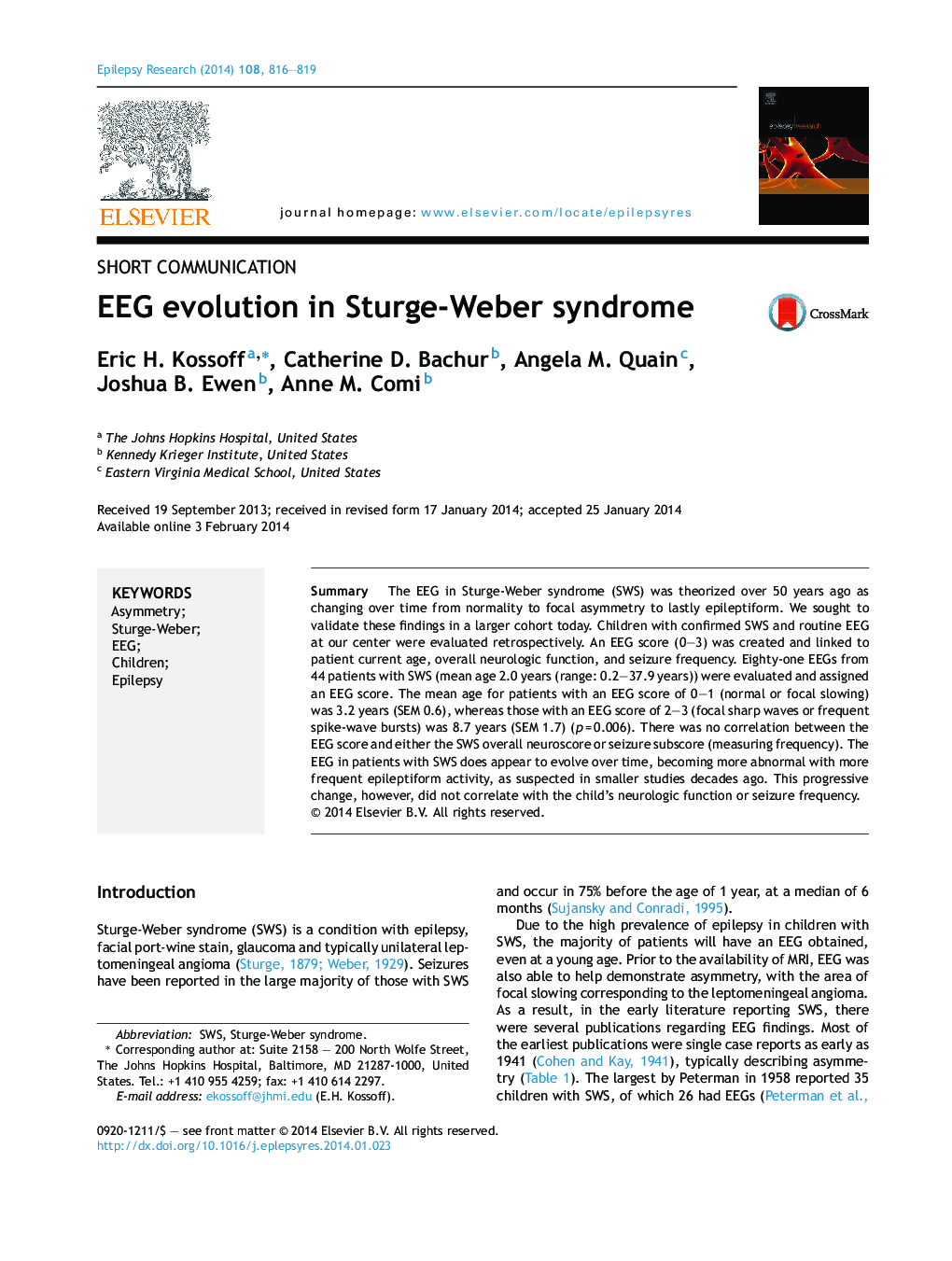| کد مقاله | کد نشریه | سال انتشار | مقاله انگلیسی | نسخه تمام متن |
|---|---|---|---|---|
| 6015611 | 1186073 | 2014 | 4 صفحه PDF | دانلود رایگان |

- In young children with SWS, the EEG can be normal.
- As they become older, the EEG appears to show asymmetries.
- Later, there can be focal spikes or sharp waves.
- These EEG changes do not correlate with seizure frequency.
SummaryThe EEG in Sturge-Weber syndrome (SWS) was theorized over 50 years ago as changing over time from normality to focal asymmetry to lastly epileptiform. We sought to validate these findings in a larger cohort today. Children with confirmed SWS and routine EEG at our center were evaluated retrospectively. An EEG score (0-3) was created and linked to patient current age, overall neurologic function, and seizure frequency. Eighty-one EEGs from 44 patients with SWS (mean age 2.0 years (range: 0.2-37.9 years)) were evaluated and assigned an EEG score. The mean age for patients with an EEG score of 0-1 (normal or focal slowing) was 3.2 years (SEM 0.6), whereas those with an EEG score of 2-3 (focal sharp waves or frequent spike-wave bursts) was 8.7 years (SEM 1.7) (p = 0.006). There was no correlation between the EEG score and either the SWS overall neuroscore or seizure subscore (measuring frequency). The EEG in patients with SWS does appear to evolve over time, becoming more abnormal with more frequent epileptiform activity, as suspected in smaller studies decades ago. This progressive change, however, did not correlate with the child's neurologic function or seizure frequency.
Journal: Epilepsy Research - Volume 108, Issue 4, May 2014, Pages 816-819